These homemade crepes are ultra thin and delicate with the most buttery crisp edges. Easy to make with just a blender and regular skillet, they’re ready for your choice of sweet or savory fillings and toppings. No special pans required for these French-style pancakes. And, best of all, you only need 8 basic ingredients!
Have you ever made these before? Though it may seem complicated, making restaurant-quality crepes at home isn’t very difficult. Today I’m walking you through the entire process including crucial success tips, the best 8 ingredients to use, why I use a blender, and a multitude of filling ideas.
I began making these a few years ago, and have eaten my fair share at cafes, restaurants, farmers’ markets, and catered events, learning A LOT along the way. My recipe hasn’t changed, but my method has improved. Consider this your Ultimate Guide to Crepes!
Crepes are thin and delicate French-style pancakes made without any leavener. When made correctly, they’re as thin as lace with irresistible buttery crisp edges. Crepes are popular at restaurants and catered events and I’ve even seen crepe stations at wedding receptions, too! Though they’re usually a breakfast or brunch option, crepes are welcome any time of day, including dinner or dessert. Filled with anything from whipped cream and berries to meats, sauce, and vegetables, crepes aren’t picky about when you enjoy them.
Crepe recipes vary, but most include flour, liquid (milk and/or water), and salt. Restaurants usually make them with a specialty pan, but a regular skillet works in any home kitchen.
Why are they a favorite? Crepes are popular because their versatility makes them FUN to eat. Rolled up or folded, you can stuff and top them with virtually anything. Nutella, whipped cream, and berries is a common choice, but savory fillings work just as well. Fold or roll them up and enjoy trying a variety of fillings and flavors. You’re definitely not limited!

Overview: How to Make Crepes
- Melt the butter: Melt some butter in the microwave or on the stove. Let it cool for a few minutes before using in the batter. (Otherwise you could scramble the eggs.)
- Combine all ingredients in a blender: Add the cooled melted butter and all the remaining ingredients into a blender. A blender works WONDERFULLY to smooth out the batter because it cuts that flour perfectly into all the wet ingredients. If you don’t have a blender, just use a mixing bowl and whisk. I use my Ninja blender.
- Chill the batter: Chill the crepe batter for at least 30–60 minutes before cooking it. This time in the refrigerator is crucial to the taste, texture, and success of your crepes. Use this time to clean up and get your skillet ready. You can even chill the batter overnight so it’s ready to cook the next day.
- Butter & heat a small skillet: Generously butter the pan and keep butter nearby for greasing the pan between each crepe, too. Though professional chefs may use a specialty crepe pan, I find a small 8-inch skillet works perfectly at home. If you don’t have a small skillet, use a larger one, but make sure you keep the crepes THIN.
- Cook crepes one at a time: The longest part of this recipe is standing over the stove and cooking them one at a time over medium heat. Use only 3–4 Tablespoons of batter per crepe. (I usually use 3 Tablespoons.) The less you use and the larger you stretch the crepe, the thinner they’ll be. As you can see in my video tutorial, I twirl the pan so the batter stretches as far as it can go. If you don’t do this, your crepes will be pretty thick and taste like tortillas. Still delicious, but very different. Flip the crepe over and cook the other side, too.
- Serve with favorite fillings: I love serving them warm with cold whipped cream and fresh berries. Keep scrolling because I have lots of filling ideas listed for you below.
How to Make Crepes Ahead of Time
You can make the crepe batter up to 1 day in advance. Seal tightly in your blender or pour into a mixing bowl and cover tightly, then prepare crepes the next day. Crepes are best enjoyed right away, but you can make a batch and store in the refrigerator for up to 1–2 days. Reheat in the microwave or arrange on a lined baking sheet (they can overlap). Cover with aluminum foil and warm in a 275°F (135°C) degree oven for 10 minutes. You can also freeze crepes—see instructions below.
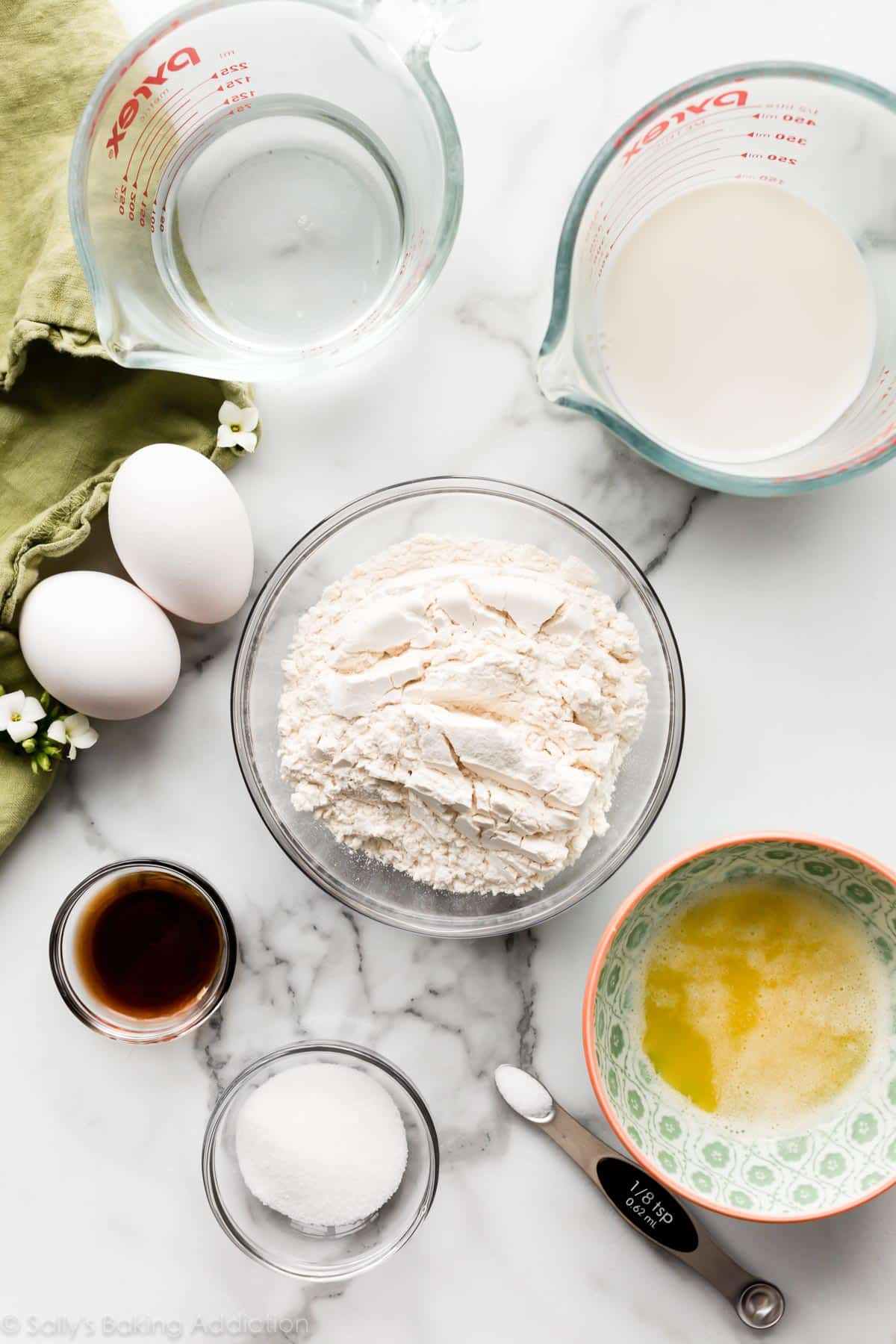
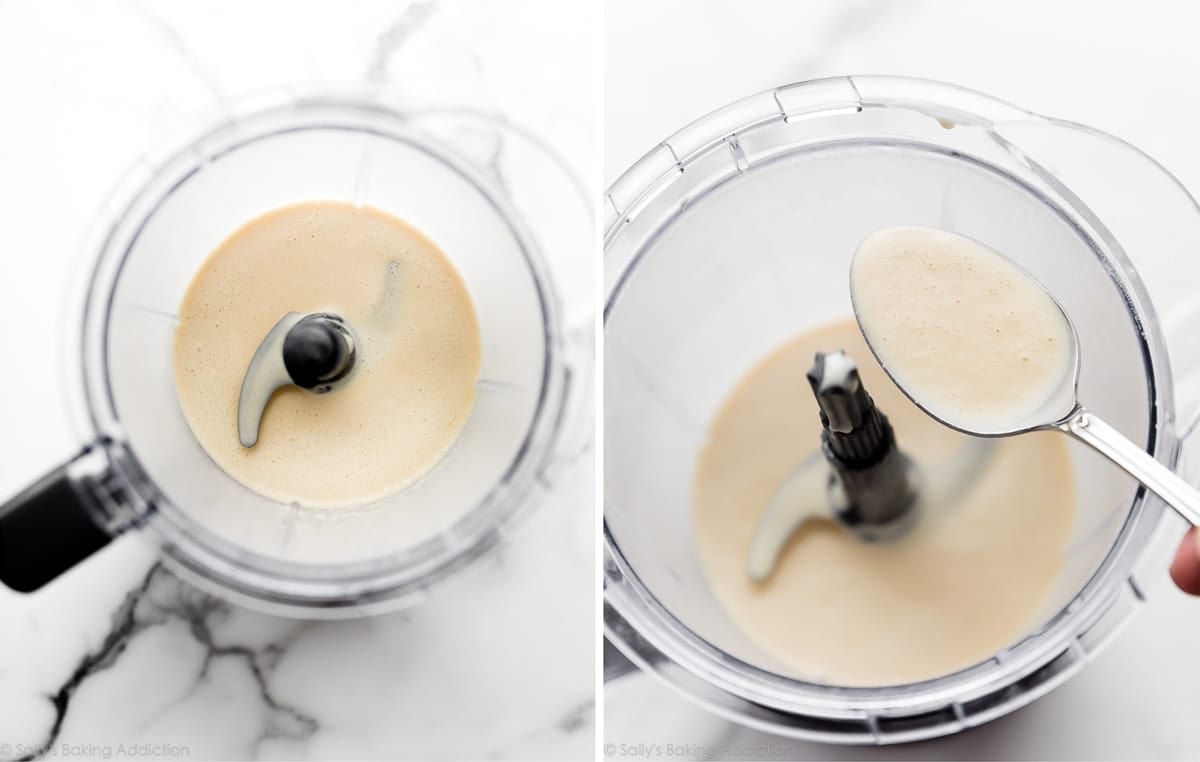
The recipe is written out below, but it’s important you understand why each ingredient is used. This is a delicate batter, so substitutions aren’t recommended.
- Unsalted Butter: Butter is a key ingredient. Have extra butter handy for the skillet.
- All-Purpose Flour: Flour is another key ingredient, providing the overall structure. I haven’t tried any successful gluten-free alternatives, but let me know if you do!
- Granulated Sugar: These are lightly sweetened; you only need 1 Tablespoon of sugar.
- Salt: A pinch of salt adds flavor.
- Whole Milk & Water: Crepe batter needs liquid. Using all water created a limp and lacking crepe, while using all milk created a heavy crepe. For the best texture, use a mix of both.
- Eggs: As they do in pancake batter, eggs provide structure and bind all the ingredients together.
- Vanilla Extract: Adds flavor—you’ll definitely smell the vanilla as you cook these on the stove! Feel free to leave it out if you make savory-style crepes.
By themselves, crepes aren’t heavily flavored at all. That’s why the texture is crucial (keep them thin!).
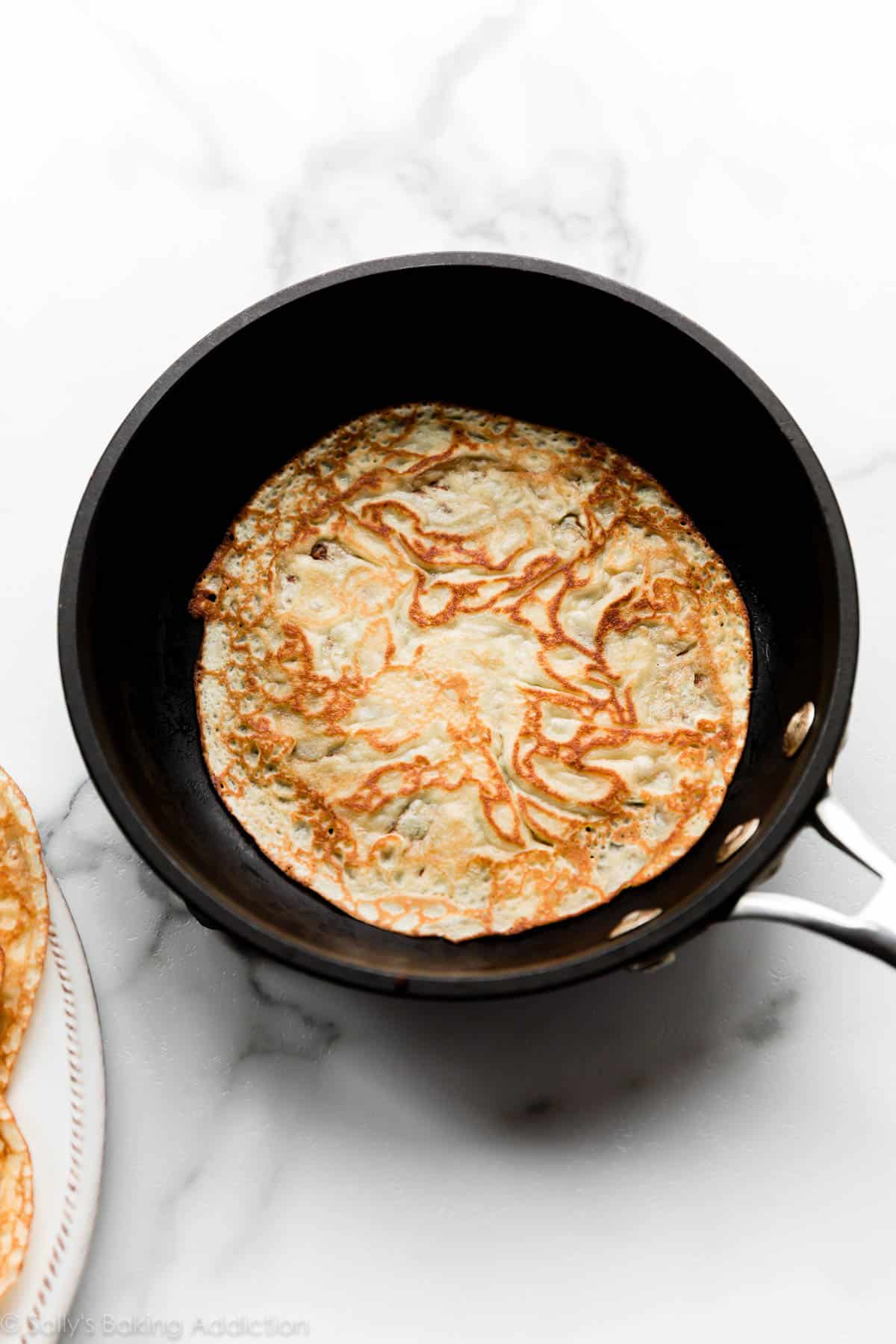
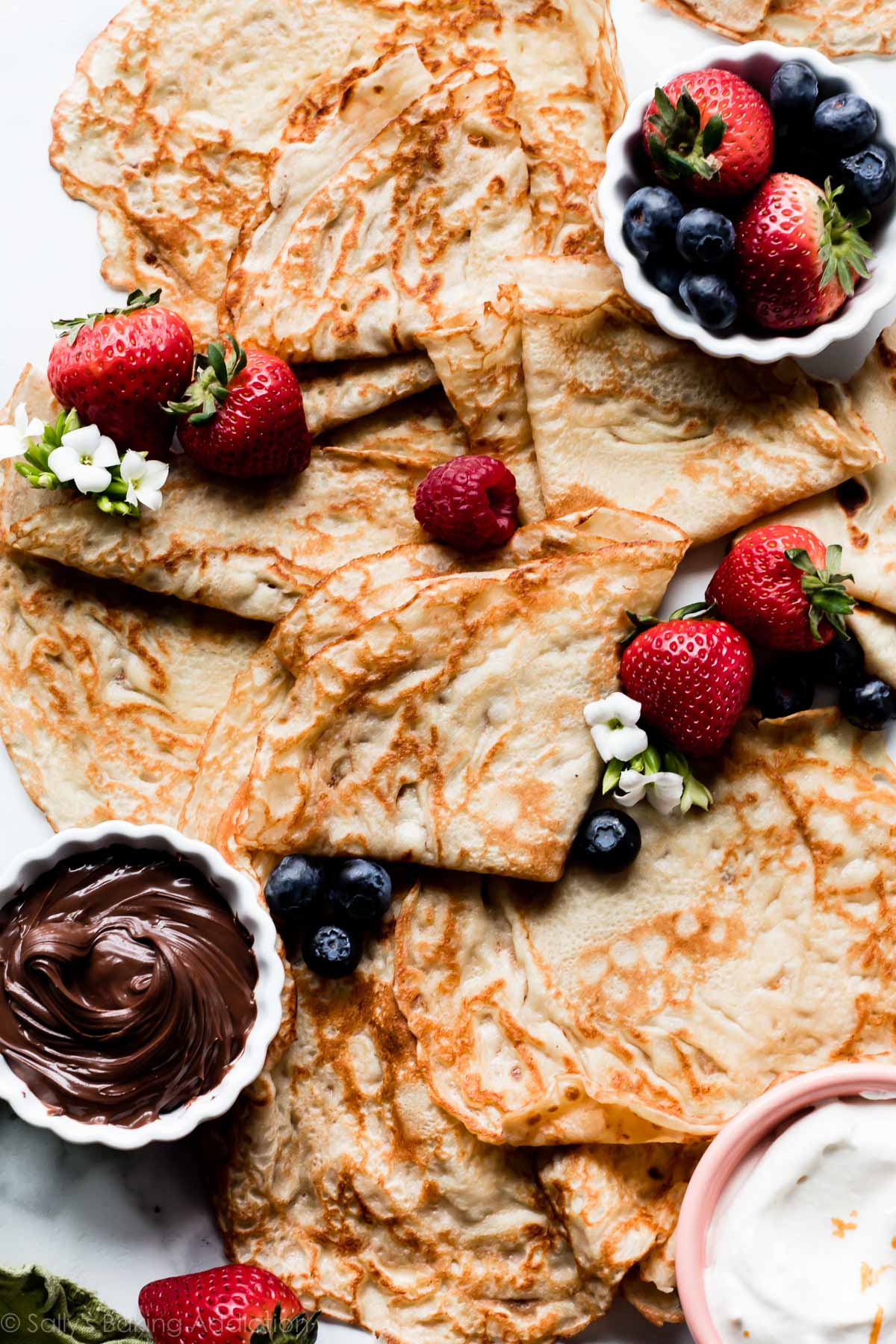
- Chill the batter: I mentioned this above and include it in the written recipe below, but it’s definitely worth repeating. One secret to the BEST crepes is to chill the crepe batter for at least 30–60 minutes and up to 1 day. This time in the refrigerator enhances the batter’s flavor and, more importantly, gives the flour a chance to fully hydrate.
- Butter the pan between each crepe: The best part of crepes is the thin, delicate, and buttery crisp edges. To achieve this, butter the pan between EACH crepe. Sounds like a pain, but just grab a stick of butter and coat the pan before adding more batter. You won’t regret it.
- Twirl the pan: Pour the batter into the center of the hot and buttered pan. Lift the pan up and twirl it so the batter stretches as far out as it can go. (The thinner the crepe, the better texture it has—trust me.) This crucial technique is much easier than it sounds and you can watch me do it in the video tutorial.

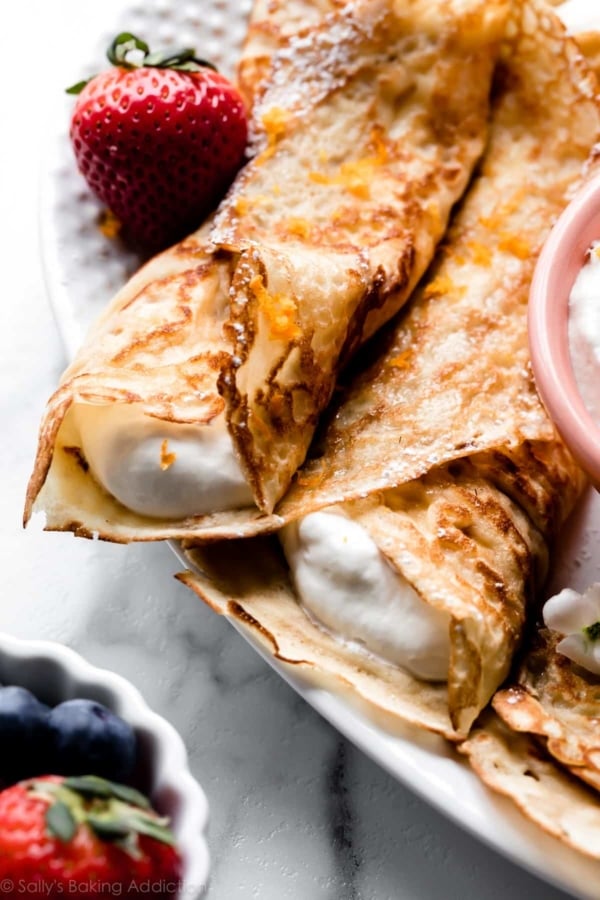
How to Make Crepes | French Crepe Recipe
What are the ingredients in a crepe?
A crepe is kind of like a large, flat pancake. The ingredients are very similar: milk, eggs, flour, vanilla, butter, etc. But in a crepe, more liquid is added and there is little or no leavening so it has no rise. This makes for an ultra thin, but ultra pliable and soft crepe. What are the ingredients for crepes?
Name some gluten free crepes.?
Gluten in wheat helps in binding and holding the texture. To attain the perfect texture, certain combinations of flours are used. Here are few combinations that replace wheat: 1. Almond flour and tapioca flour 2. Almond flour and arrowroot flour 3. Rice flour, buckwheat flour and cornstarch 4. Almond flour and gelatine powder Resting time should be increased compare to regular resting time to make them more resistant from breaking apart.
What do you put in a crepe?
Mini chocolate chips or diced chocolate are recommended. Cocoa powder or Matcha powder: Add the rich & dark flavor to complete the crepe! Powdered sugar: Just a dash of powdered sugar makes a crepe look very fancy. Crushed toffees: I love them with caramel sauce, bananas, chocolate fillings, etc.
What makes a good crepe?
All-purpose flour: Glutens in flour helps to bind all ingredients together and creates the “sheet.” Granulated sugar: It helps to moisten the crepe as well as caramelize the surface more. You can also omit it to make savory crepes. Salt: It adds more depth to the flavor. Egg: Egg also helps connect all the ingredients while adding a soft texture.
